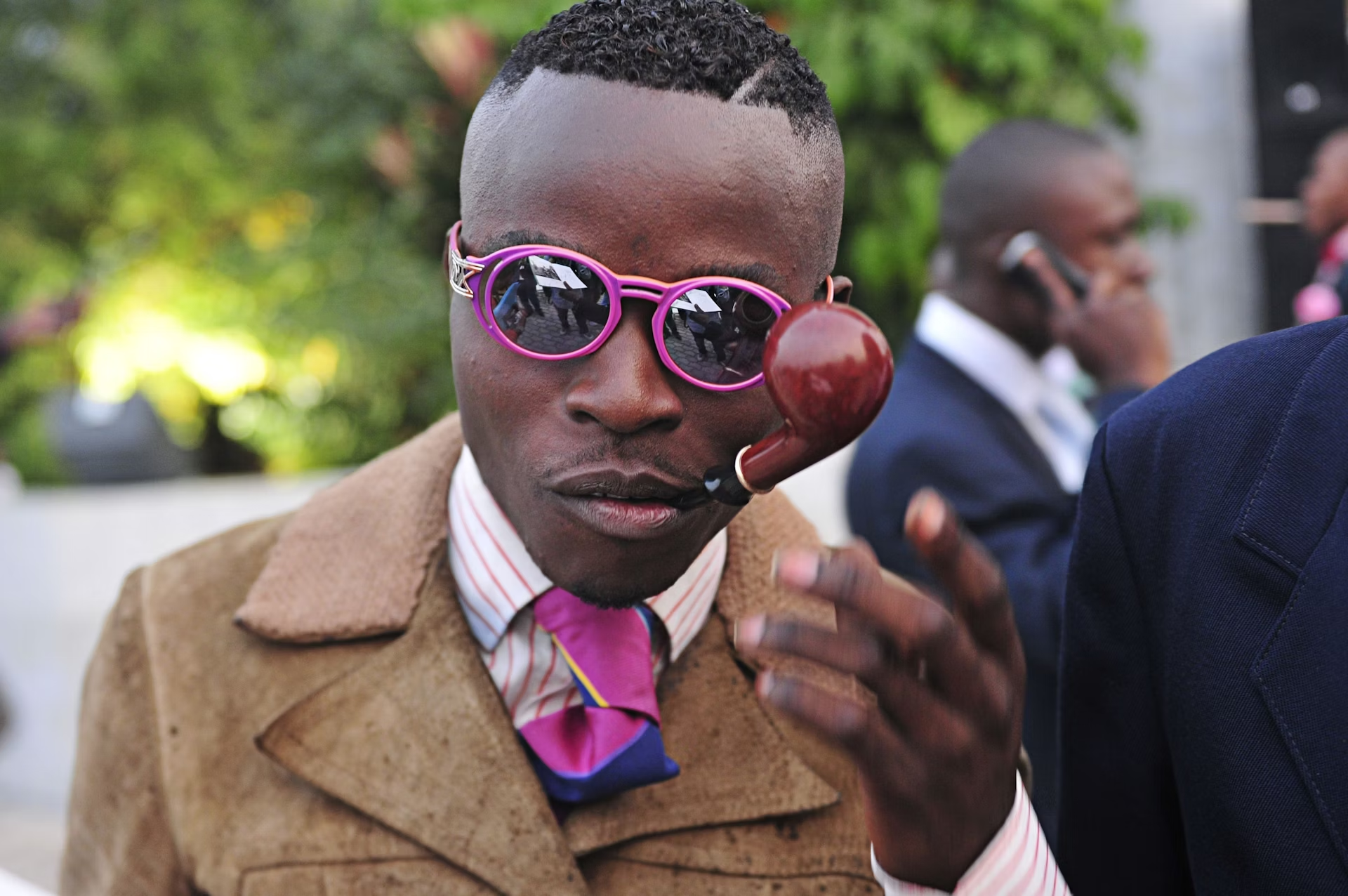Inside the slick, stylish world of black dandyism

Shantrelle P. Lewis was quite young when she had her first glimpse of black dandyism – a style seen on the men in her family back in Louisiana. She remembers her brother’s lifelong passion for suits, which started at the age of five, and her father and uncle in suspenders, always smartly dressed.
She could not name it then, but the decorum expressed by the clothing choices of the men in her family became the inspiration for her new book, Dandy Lion.
A curator, author and researcher specialising in diasporic aesthetics, Shantrelle started expanding on the subject of black dandies as her way of confronting and responding to what she calls “the ‘thug’ narrative” – a myth that is continuously perpetuated as the only option for black men.

Photography Hassan Hajjaj, Blaize, 2015
Writing in the book’s introduction, Shantrelle explains that – although black men have been the originators of many iconic fashion trends around the world – dandyism is about much, much more than just being stylish.
“Specific attributes and attitudes distinguish the black dandy from the everyday dapper Don”, she explains. “A black dandy is a gentleman who intentionally appropriates classical European fashion, but with an African diasporan aesthetic and sensibility.”
To understand this statement better, it’s important to get context on the broader origins of Dandy style – which, despite its slick and festive look, is rooted in rebellion. Shantrelle explains that the first dandies were middle-class white men who disrupted the order of the class system and its signifiers of status by dressing like aristocrats.
At the time, and today, Dandyism also combatted gender stereotypes, adding flair and panache to the bland sobriety or aggressiveness expected of masculinity.

Photography Arteh Odjidja, Red Square Moscow, Russia, 2012, from the series Stranger in Moscow
“The Victorian dandy movement coincided with the height of the transatlantic slave trade,” writes Shantrelle. “Consequently, the black dandy entered Western history when enslaved Africans were made to dress up extravagantly in order to represent their owners.”
“However, the luxuriously dressed servants became more than status symbols when they personalised their uniforms with their own sense of pride and style.”
It was then that the dandy look gained yet another layer of meaning, beyond just class and gender. Styled by black men, the detailed suits became a symbol of subversion – a way of asserting agency through the appropriation of the Euro-centric style that had been enforced, by injecting identity and self-definition.

Photography Omar Victor Diop, Alt + Shift + Ego, 2013
Nowadays the black dandy style has expanded, influenced pop culture and fashion, and shifted its meaning to fit with the times. However, its message of self-definition and independence remains just as strong as it once was.
“We [photographers and those who saw the initial Dandy Lion exhibition] discussed and discovered that black dandyism was more than a passing fad, but a sartorial manoeuvre used by Black men to confront criminalising stereotypes, widen conceptions of masculinity, and create a new self-identity for the twenty-first century,” Shantrelle adds.
It is the modern embodiment of the Black dandy that Shantrelle explores in her book – and more as a way of opening a much bigger dialogue that deals with culture, diaspora and power.
The book is beautifully colourful, chock-full of notes, stories and observations on the style as it is today. In its pages, we see men and women, photographers, designers, artists, celebrities and everyday people, all offering a multitude of perspectives on the worldwide phenomenon that is black dandyism.

Photography Aaron Smith, Musician Janelle Monáe, 2009

A Congolese national parades in front of fans during the La Sape competition at Kin Malebo restaurant, in Yeoville, Johannesburg South Africa, 30 May 2009. (Photography Daniele Tamagni)

Photography Phil Knott, Ozwald Boetang – Tailor, 1997, from the series Black in London

Photography Rose Callahan, Barima Owusu-Nyantekyi at the King’s Head Club, London, March 2013
Dandy Lion: The Black Dandy and Street Style by Shantrelle P. Lewis is out now, via Aperture.
Enjoyed this article? Like Huck on Facebook or follow us on Twitter.
Latest on Huck

A behind the scenes look at the atomic wedgie community
Stretched out — Benjamin Fredrickson’s new project and photobook ‘Wedgies’ queers a time-old bullying act by exploring its erotic, extreme potential.
Written by: Isaac Muk

“Welcome to the Useless Class”: Ewan Morrison in conversation with Irvine Welsh
For Emma — Ahead of the Scottish author’s new novel, he sat down with Irvine Welsh for an in-depth discussion of its dystopic themes, and the upcoming AI “tsunami”.
Written by: Irvine Welsh

“Struggle helps people come together”: Sharon Van Etten & The Attachment Theory
Huck’s February interview — To hear more about the release of the indie darling’s first collaborative album, we caught up with her and Devra Hoff to hear about the record, motherhood in music and why the ’80s are back,
Written by: Isaac Muk

Nxdia: “Poems became an escape for me”
What Made Me — In this series, we ask artists and rebels about the forces and experiences that shaped who they are. Today, it’s Egyptian-British alt-pop shapeshifter Nxdia.
Written by: Nxdia

Kathy Shorr’s splashy portraits inside limousines
The Ride of a Lifetime — Wanting to marry a love of cars and photography, Kathy Shorr worked as a limousine driver in the ’80s to use as a studio on wheels. Her new photobook explores her archive.
Written by: Miss Rosen

Lewd tales of live sex shows in ’80s Times Square
Peep Man — Before its LED-beaming modern refresh, the Manhattan plaza was a hotbed for seedy transgression. A new memoir revisits its red light district heyday.
Written by: Miss Rosen